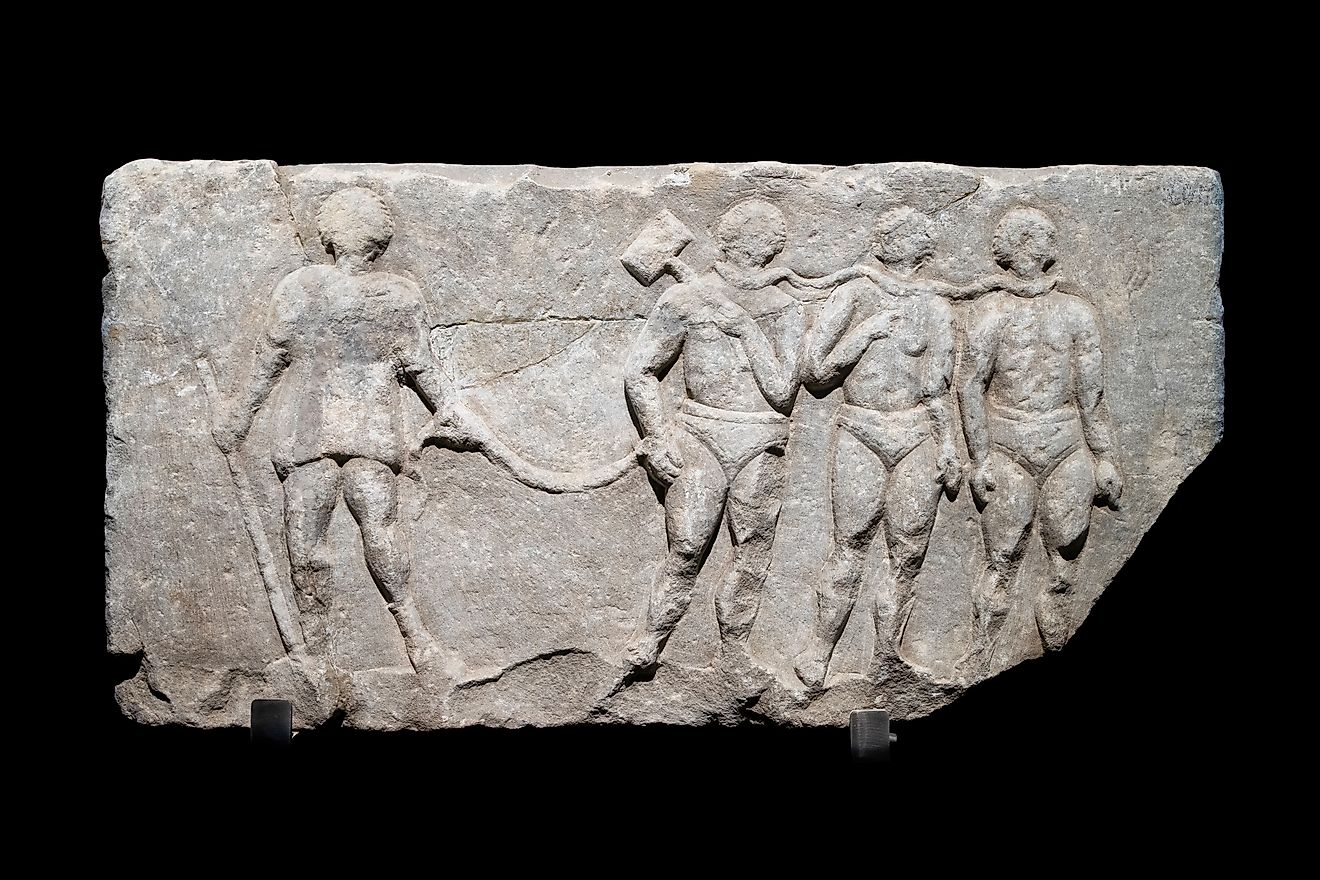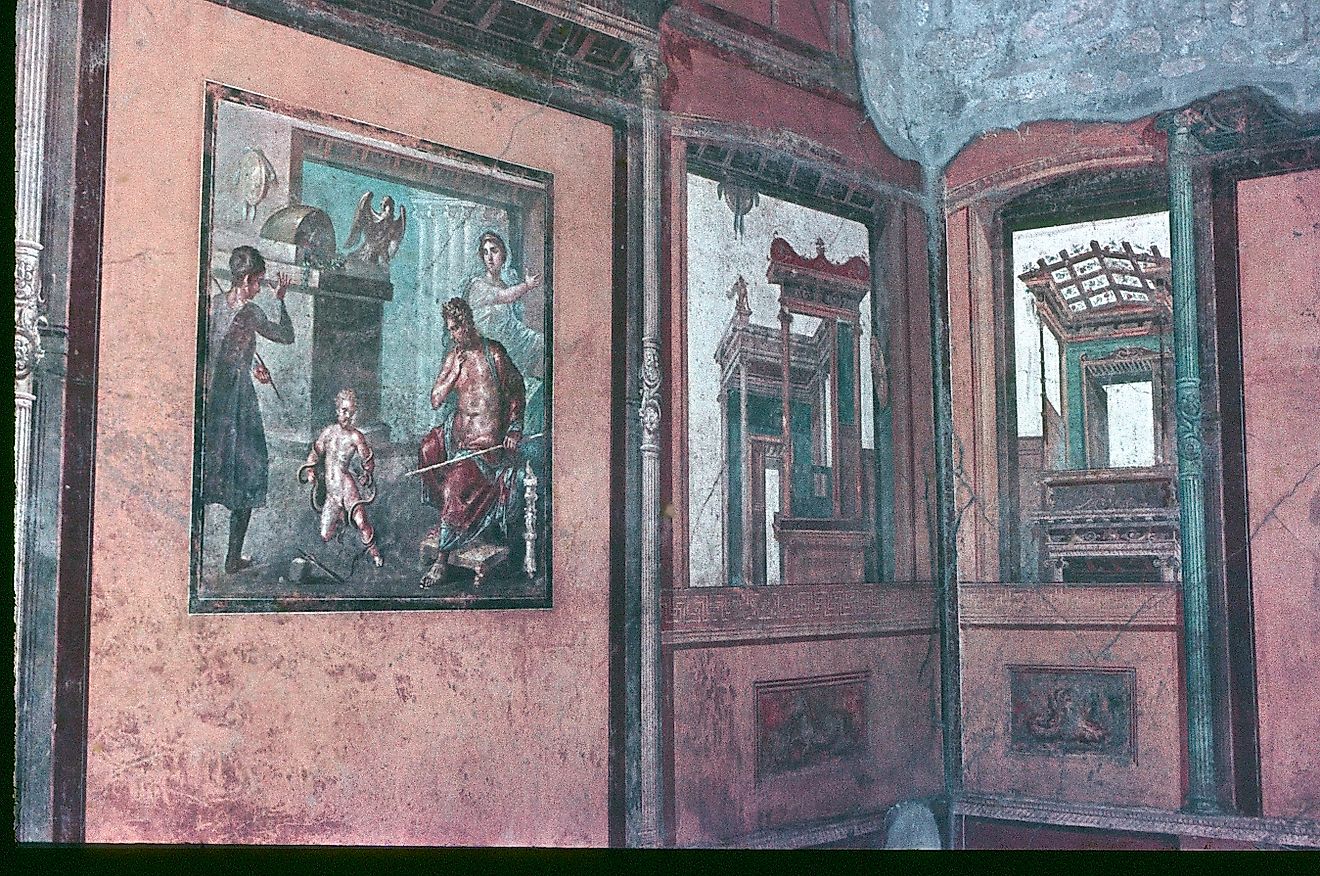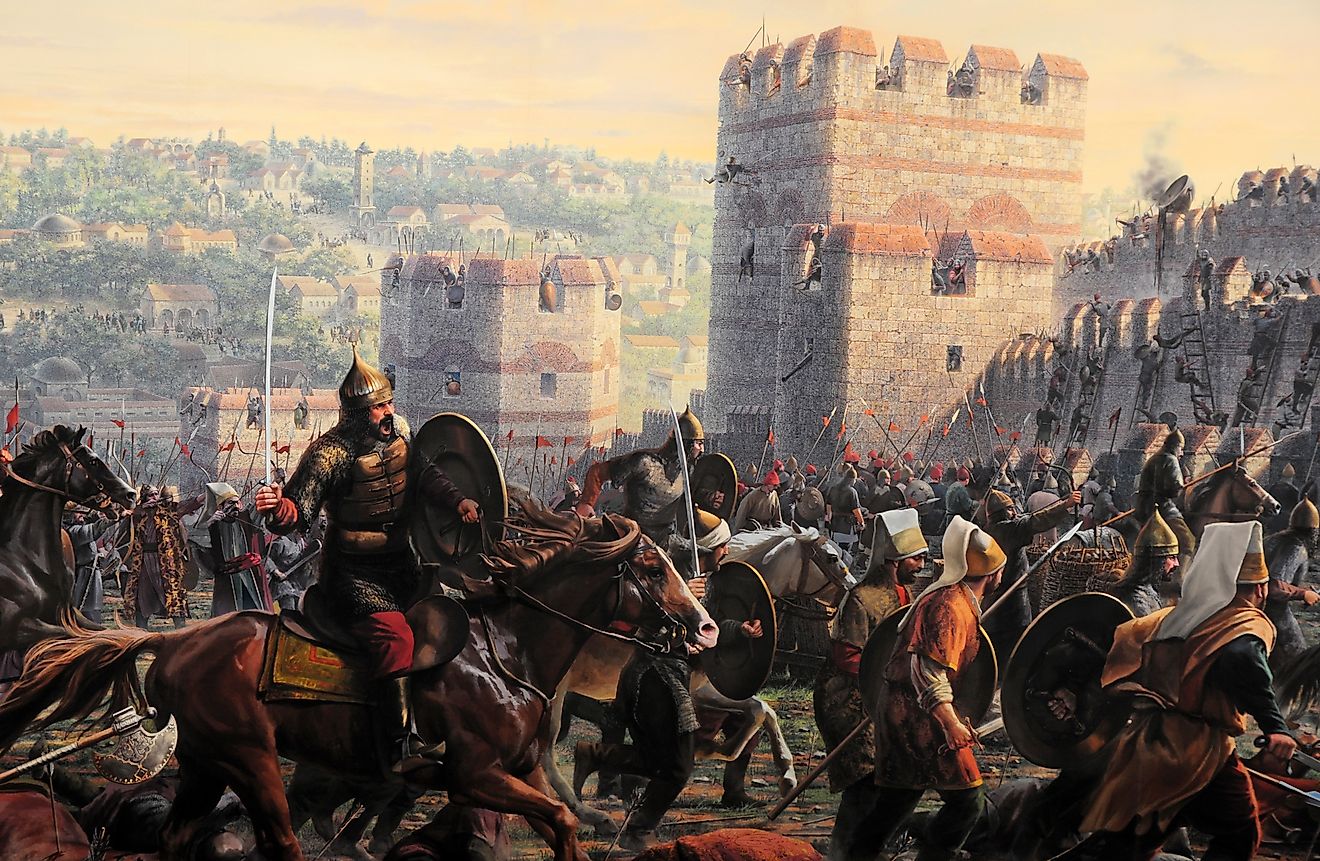
The Death of Cleopatra
After the combined forces of Roman General Marc Antony and Egyptian Queen Cleopatra were decimated in the Battle of Actium, the lovers retreated to an uncertain future in Alexandria. With Octavian's Roman army at the city gates, Antony ended his life by falling on his sword.
With everything lost, Cleopatra is determined to die on her terms. As the story goes, Cleopatra penned a suicide note declaring her farewell. She entrusted the note to a guard who gave it to Octavian.
She then removes two deadly snakes from a basket. She presses a snake to her bosom. The bites kill her and her two handmaidens, instantly. The story of Cleopatra's last moment is told and retold, but is this really how Egypt's famous Queen died?
Some historians suggest she drank poison which stopped her heart from beating. Yet another theory states the poison she took was topical and spread over her skin. Furthermore, did the queen and her lover make a final pact to end their lives together?
One fact remains, Cleopatra died from poison. She died as dramatically as she lived. Unravel what is known, theorized, and artistically retold about Egypt's famous queen, the death of Cleopatra.
The Historical Context
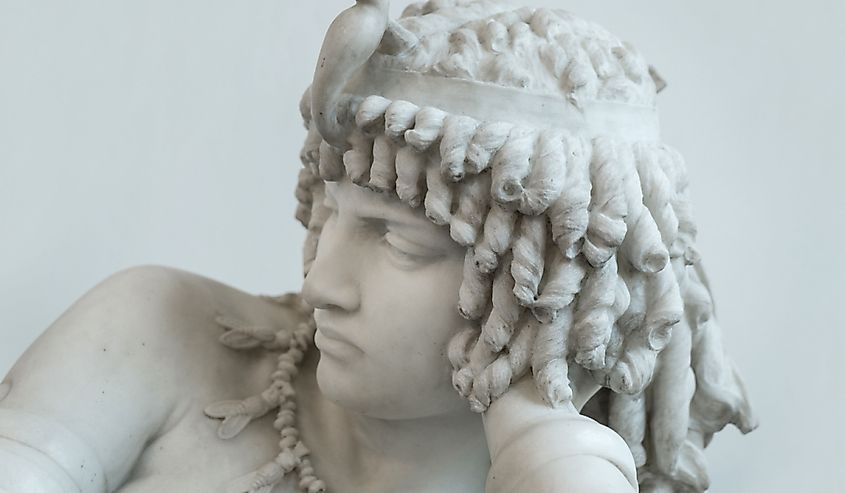
Although born in Egypt, Cleopatra was not Egyptian. Her ancestry is traced to the last Ptolemaic dynasty of the Macedonian Greek royal family of Ptolemy I.
As a young girl, Cleopatra was afforded the privilege of education, which was unusual at the time. She became an accomplished mathematician, chemist, and philosopher. She studied and became multilingual in Greek, Egyptian, Arabic, and Hebrew.
In 51 BCE, her father, Ptolemy XII died. His death left Cleopatra a co-regent with her 10-year-old brother, Ptolemy XIII. Keeping with Egyptian tradition, to keep rulership within the family, the two were married. Shortly afterward, her brother's supporters instigated a revolt against her, causing her to flee from Alexandria.
In 48 BCE, Roman leaders Julius Caesar and Pompey were engaged in a civil war. Defeated in battle, Pompey fled to Egypt but was assassinated before Caesar's arrival.
News of Caesar's idle time reached Cleopatra who arranged an intimate meeting. She is rolled into a carpet and delivered to Caesar's home quarters. Upon delivery, the carpet was unrolled to reveal a 21-year-old Egyptian queen.
Cleopatra captivated the 52-year-old Caesar with her ploy and strategy. At the time of their meeting, Cleopatra was a very rich woman while Caesar was chronically in debt, lending more to her charm.
The following year, in 47 BCE, Cleopatra becomes Caesar's mistress. She uses Caesar's army to destroy Cleopatra's rival for power in Egypt, her brother and husband, Ptolemy XIII. As a result, Ptolemy XIII drowns trying to escape the battle.
Caesar established Cleopatra and her younger brother, Ptolemy XIV, as the rulers of Egypt before returning to Rome where the civil war continued, led by Pompey's sons.
In 45 BCE, Cleopatra joined Caesar with their son, Caesarion, and her new husband, her younger brother Ptolemy XIV. They are housed in a villa on the outskirts of the city while Caesar and Cleopatra continue their relationship privately.
Meanwhile, Pompey's sons continue to gain support in Spain. Caesar left Rome to defeat his enemies. Returning to Rome victorious, Caesar is hated within the senate.
The following year in 44 BCE, Caesar was assassinated. A month later, Cleopatra returned to Egypt where her brother-husband Ptolemy XIV died of poisoning upon Cleopatra's orders. Removing Ptolemy XIV made way for her son, Caesarion, to become co-regent as Ptolemy XV and rule alongside her.
Fast forward to 41 BCE. Marcus Antonius, otherwise known as Mark Antony, summons Cleopatra to Tarsus who sails into the city on the Cydnus River on a decorated barge. She is dressed in robes similar to the goddess Aphrodite. As planned, Cleopatra's bold entrance captivated Mark Antony, thus beginning their affair. In the same year, Cleopatra gives birth to Antony's children, Alexander Helios and Cleopatra Selene.
Distracted, Marc Antony gave up plans to invade the Parthian Empire to return with Cleopatra to Alexandria. While there, Cleopatra convinces him to order the execution of her younger sister, Arsinoe, to remove her as a threat to the throne.
In 40 BCE, Mark Antony leaves Alexandria to meet Octavian and Lepidus, rivals for command of the Romans, in Italy. As part of their political agreement, Mark Antony marries Octavia, the sister of Octavian.
In addition to the marriage, the Second Triumvirate was formed which split Rome's provinces into three parts to be ruled by each of them.
Within the year, Caesar’s assassins, Brutus and Cassius, are defeated by Marc Antony in the Battle of Phillipi. The defeat established his reputation as an official general of Rome.
A few years later in 37 BCE, Mark Antony and Octavian were once again in political disagreement. They parted ways, leaving Marc Antony to resume his campaign against the Parthian Empire. While campaigning, Cleopatra joins him and later that year, she gives birth to a son, Ptolemy Philadelphus.
With her new lover, another foreigner, Cleopatra needed the support of the Egyptian people to maintain control of the throne. To gain support, Cleopatra relied on the people's religious superstitions.
She used propaganda to establish herself and Mark Antony as reincarnations of goddess and god, Isis and Osiris. Further political propaganda proclaimed Cleopatra as the daughter of Re, the Egyptian sun god.
Recognized as a goddess throughout the Mediterranean, Cleopatra adorned her Isis robes in public to maintain her image, allowing her greater political influence to rule Egypt.
Over the next few years, the couple traveled together as Marc Antony conquered the Mediterranean through his military conquests.
After conquering Armenia, Marc Antony distributed lands to his and Cleopatra’s children. The intentional snub to Octavian made it clear that their family ruled the East.
In 30 BCE, Lepidus was eliminated by Octavian from the triumvirate. By doing so, Octavian's political power grew. In the same year, Marc Antony divorced Octavia, resulting in Octavian declaring war on Cleopatra.
The fighting took place in Greece. Although Marc Antony possessed a larger army, he was repeatedly defeated by the masterful naval tactics of Octavian's general, Agrippa. After their combined forces were annihilated in the Battle of Actium, Marc Antony and Cleopatra retreated to Egypt. Agrippa and Octavian followed in pursuit.
Popular Theories of Her Death
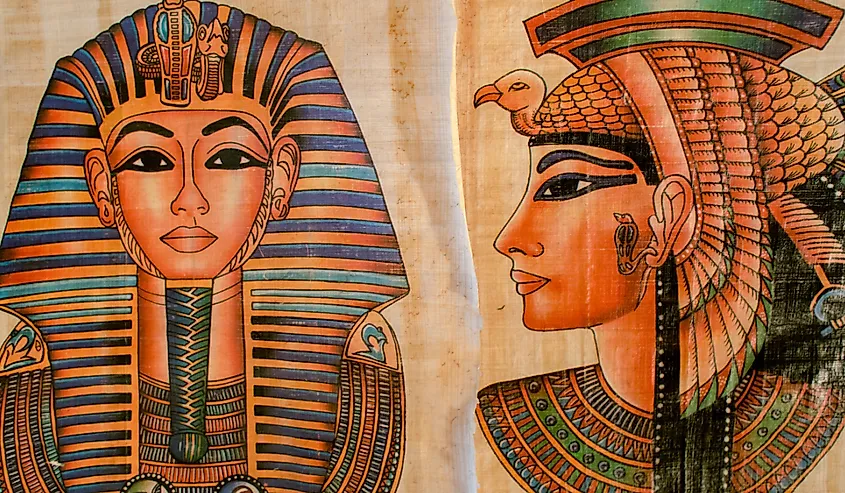
In 30 BCE, at the age of 39, Cleopatra died. As the last queen of ancient Egypt, her death brought an end to the Ptolemaic dynasty and has captivated imaginations throughout the centuries.
With the defeat of the Battle of Actium, Cleopatra found herself trapped in a dangerous situation which led to her demise. There are many theories about what happened next.
One theory suggests Cleopatra and Marc Antony agreed on suicide instead of being captured. The theory stemmed from Cleopatra's secret negotiations with Octavian to save her children.
According to this theory, she sent a suicide letter to Marc Antony, assuming he would come to her to join her in death. As a result of reading her letter, he fatally stabbed himself.
Distraught, Cleopatra summoned Antony to her where he died in her arms. Cleopatra attempted to continue negotiating with Octavian, but he refused.
Instead of becoming a political captive and spoil of war for Octavian, she chose to end her life. It is here where the details become fuzzy.
Many stories have been written but the famous story regarding snakes was written by historian Plutarch. According to his writing, Cleopatra allowed an asp, a venomous snake known also as the Egyptian Cobra, to bite her. As a common snake in North Africa, it is possible to have acquired the snake for her purpose.
The theory alludes to Cleopatra's public image as the asp symbolized power and was often on the crowns of pharaohs. If she utilized a snake to end her life, it would have been a calculated decision to remind her enemies of her strength.
According to Egyptologists, there are a few problems with this theory. First, Cobras grow up to five feet long, sometimes reaching eight feet. It is unlikely that one snake that size, much less two, would be easily smuggled undetected.
Second, although deadly, a bite from a snake is a slow and painful death. The theory that Cleopatra and her maids died instantly seems unlikely. Also, Octavian would have been able to return to see her alive after receiving her note bidding him farewell. Instead, she was found dead.
The clever and resourceful queen would have prepared and carefully calculated the most effective way to end her life. If she did use poison, it's more likely the poison was consumed or applied to her skin instead of through a bite.
Artistic Interpretations
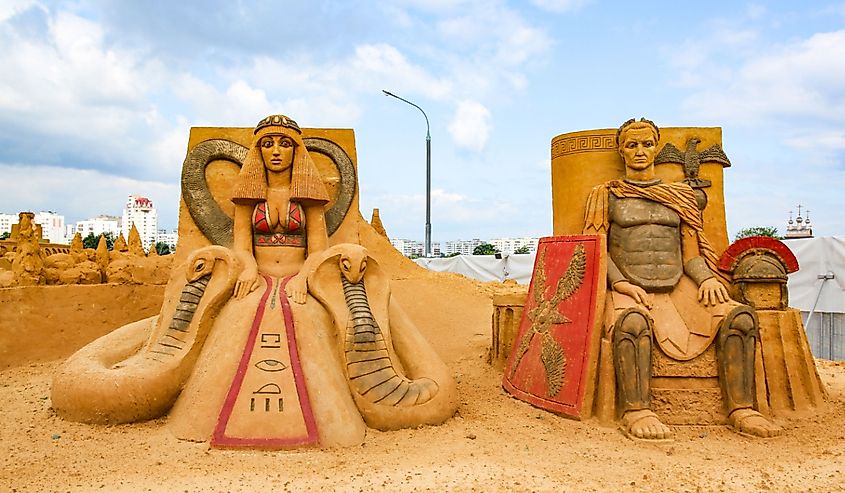
Cleopatra’s life and death represent power, beauty, and tragedy. Details regarding her death sparked legends that have fascinated artists and inspired countless artistic interpretations.
In movies, Cleopatra is portrayed as a stunning beauty with actresses starring Elizabeth Taylor and Vivien Leigh. The actresses depict the image of Cleopatra as a seductress using charisma to bewitch the powerful men around her.
The famous painting by artist Jean-André Rixens entitled, The Death of Cleopatra, was created in 1874 and is hung in the Museum of the Augustines in Toulouse, France. The painting highlights the Egyptian queen nude in the forefront. Her pale lifeless body contrasts with rich deep colors in the background.
Rixens' painting inspired other artists to create their own representations of the famous queen. One such artist is Jean-Léon Gérôme. The painting captures the queen's defiance in her last breath surrounded by loyal servants.
Gérôme's painting of Cleopatra and Caesar depicts Cleopatra in a see-through fabric. A servant behind her has just unrolled her from a carpet. She stands flooded in a pale spotlight highlighting her figure and her seduction.
In addition to paintings, the death of Cleopatra lent inspiration to literature and theater. William Shakespeare’s play Antony and Cleopatra focuses on the drama surrounding their relationship and ultimate demise. In Shakespeare's interpretation, Cleopatra is a powerful woman who is loyal to her country and deeply in love with Antony.
Each visual interpretation of Cleopatra invites the audience to perceive her as a woman who took charge of her life. Artists depict the former queen with strength, stunning beauty, and a shrewd mind.
Modern Perspectives and Debates
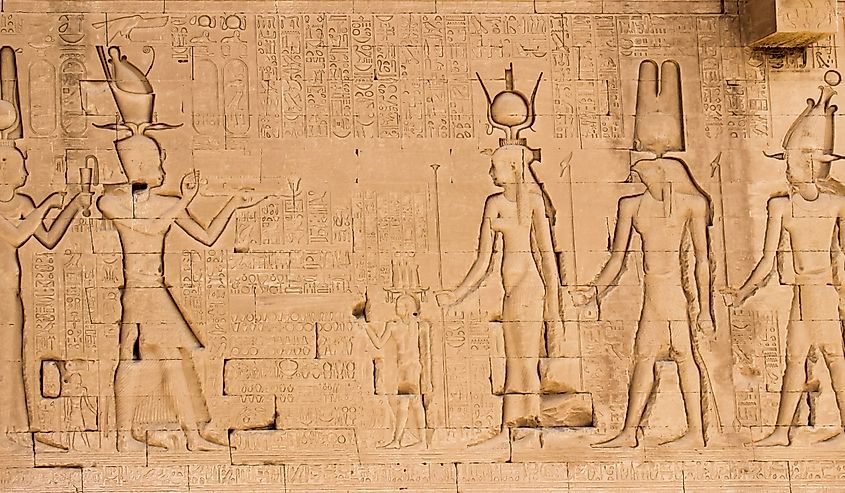
Modern scholars debate the credibility of ancient reports regarding snakebites as the cause of death. Some academics hypothesize that Octavian manipulated her to kill herself to save her children.
In 2010, German historian Christoph Schaefer suggested Cleopatra ingested her poison. He speculates the poison was a lethal herbal combination of hemlock, wolfsbane, and opium. The deadly concoction would have killed her and her servants quickly, leaving no chance of survival.
This theory seems most probable. She or her handmaidens would be able to keep the poison nearby or concealed within their robes for easy access.
A newer theory proposes that Cleopatra did not use poison at all. This theory, put forward by author Pat Brown in 2013, argues that Cleopatra did not take her own life but was murdered.
Brown reasons that Octavian would not have left his prized trophy of war unattended. He would have wanted her alive to parade her through Rome to publically strip her of her power.
Octavian had already sent assassins to murder Cleopatra and Caesar's son, Caesarion, who was sent to Ethiopia by his mother for his safety. Since her handmaidens were also dead, it is viable to conclude the theory of murder is plausible.
In 2022, archaeologist Kathleen Martinez of the University of San Domingo discovered a tunnel beneath the ancient Taposiris Magna Temple in Egypt. The tunnel measures six feet high and more than 4,000 feet long. Martinez believes the tunnel could lead to the lost tomb of Cleopatra.
The discovery of Cleopatra's tomb may contain jewelry, statues, and funerary items that can answer questions about the queen's life and death. If the tomb is indeed Cleopatra's, perhaps the mystery surrounding her death can finally be solved.
Cleopatra's Legacy After Death
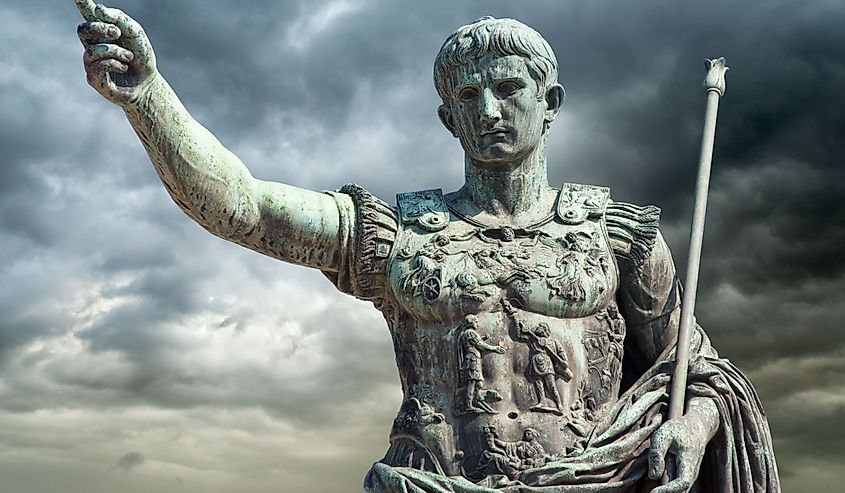
With her passing, the ancient Egyptian civilization declined and became another province of the Roman Empire.
Now that his political enemies were exterminated, Octavian commanded the loyalty of the army. Octavian was acclaimed as Emperor Augustus and created a new empire.
With the end of the war, Emperor Augustus returned to Rome. He was welcomed with great pomp and circumstance and decided to display his victory publicly with a parade.
Emperor Augustus rode on a chariot pulled by four horses. The deceased queen's surviving children, Alexander Helios, Cleopatra Selene, and Ptolemy Philadelphus walked in the procession behind him.
In the years to follow, Emperor Augustus took absolute control of Egypt. Laws and administrations were changed to adhere to the Emperor's strict social standards. Although a wealthy province of the Roman Empire, Egypt as Cleopatra knew it was gone.
To summarize...
Cleopatra's life continues to inspire artists to imagine, interpret, and create renditions of their own. Without the written documentation of eyewitnesses, Cleopatra’s death remains shrouded in mystery.
The exact final moments of Cleopatra's life are unknown. Octavian's memoirs are the only written accounts discovered. Octavian benefited from her demise, taking over her country to create a vast empire and installing himself as emperor. When he sat down to write about it, he might have changed the details to absolve himself of direct responsibility for her death.
It is poetic that her conquest for power ended so dramatically. She lived a life full of murder, lust, and adventure. Her extensive education provided the skills needed to negotiate and navigate political affairs. She took great risks and lost it all.
Will we ever truly know the circumstances of her death, or is it destined to remain one of history's most tantalizing mysteries?
